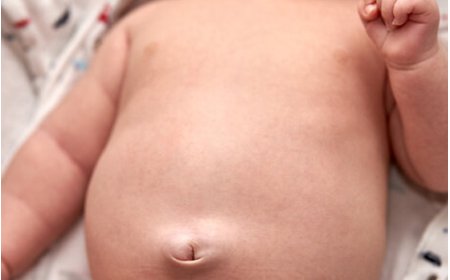Hole in Heart

Introduction:
In India, a country known for its diversity and cultural richness, there are many brave hearts who face a unique challenge called "Hole in the Heart." It's essential to understand what this condition is, how it affects people, and how we can take care of our hearts to prevent it. In this article, we will explore the different types of holes in the heart, their signs and symptoms, causes, risk factors, diagnostic tests, treatments, and prevention techniques, all explained in simple language for 10-year-old children to easily understand.
Signs and Symptoms:
A hole in the heart can cause various signs and symptoms, which may vary depending on the type and size of the hole. Common symptoms include:
- Fatigue and weakness
- Difficulty breathing or rapid breathing
- Poor growth and development in kids
- Cyanosis - a bluish tint on the skin and lips
- Frequent lung infections and pneumonia
- Heart murmurs (unusual sounds in the heart)
- Rapid heartbeat
What is Hole in Heart?
A hole in the heart is a congenital heart defect, which means that a person is born with it. It's like having a tiny opening or "hole" in the walls that separate the different chambers of the heart. This hole disrupts the normal blood flow and makes the heart work harder to pump blood.
How Is Hole in Heart Classified?
Holes in the heart are classified into three main types:
- Atrial Septal Defect (ASD): A hole between the two upper chambers of the heart, the atria.
- Ventricular Septal Defect (VSD): A hole between the two lower chambers of the heart, the ventricles.
- Patent Ductus Arteriosus (PDA): An unclosed blood vessel that should close shortly after birth but remains open, causing abnormal blood flow.
Causes and Triggers:
The exact cause of a hole in the heart is not always known, but it's thought to be a combination of genetic and environmental factors. Sometimes, certain conditions during pregnancy can increase the risk of a baby having a heart defect. For example, if a pregnant woman has uncontrolled diabetes, consumes alcohol, or smokes, it may increase the risk of a hole in the heart in the baby.
Risk Factors with Examples:
While most heart defects occur by chance, some risk factors may increase the likelihood of having a hole in the heart:
- Family History: If a close family member has a congenital heart defect, the risk may be higher.
- Rubella (German Measles) Infection during Pregnancy: Mothers infected with rubella during pregnancy may have babies with heart defects, including holes in the heart.
Types of Hole in Heart and Their Detailing:
-
Atrial Septal Defect (ASD): ASD is a hole in the wall between the atria, the heart's upper chambers. This hole allows oxygen-rich blood to mix with oxygen-poor blood, causing an overload of blood in the lungs. Small ASDs may close on their own over time, but larger ones might need treatment.
-
Ventricular Septal Defect (VSD): VSD is a hole in the wall between the ventricles, the heart's lower chambers. This allows oxygen-rich blood to flow back into the lungs instead of being pumped to the body. Small VSDs might not cause many problems, but larger ones can lead to breathing difficulties and heart strain.
-
Patent Ductus Arteriosus (PDA): PDA is a persistent opening between the aorta and the pulmonary artery, two large blood vessels connected to the heart. It allows some oxygen-rich blood to flow back into the lungs, making the heart work harder. PDA can sometimes close on its own, but if it persists, it might require treatment.
Diagnostic Tests and Treatments:
-
Physical Examination: Doctors can detect heart murmurs or other abnormal signs during a routine checkup, leading to further evaluation.
-
Electrocardiogram (ECG or EKG): This test measures the electrical activity of the heart and helps identify irregularities.
-
Chest X-ray: It provides an image of the heart and lungs and can reveal if the heart is enlarged due to the defect.
-
Echocardiogram (Echo): This ultrasound test shows real-time images of the heart's structure and function, helping doctors visualize the hole and its severity.
-
Cardiac Catheterization: In this procedure, a thin tube is inserted into a blood vessel and guided to the heart to measure pressure and obtain detailed information.
-
Surgery: Depending on the type and severity of the hole, doctors may recommend surgery to close it using stitches or a patch.
-
Medications: Some medications can help manage symptoms and reduce strain on the heart while waiting for surgery or if the hole is small and might close on its own.
Complications of Hole in Heart:
If left untreated, a hole in the heart can lead to serious complications such as heart failure, arrhythmias (abnormal heart rhythms), and an increased risk of developing infections in the heart.
Prevention Techniques:
While not all heart defects can be prevented, there are some steps pregnant women can take to reduce the risk of congenital heart defects:
- Getting regular prenatal care and following the doctor's advice during pregnancy.
- Avoiding alcohol, smoking, and certain medications that may harm the baby during pregnancy.
- Managing chronic conditions like diabetes, if present, before and during pregnancy.
Having a hole in the heart can be challenging, but with early detection and proper treatment, many individuals can lead happy and healthy lives. By understanding the signs, causes, and prevention techniques, we can work together to take care of our hearts and ensure a brighter and healthier future for everyone in India and beyond. Remember, each one of us is a brave heart with the power to make a difference!
What's Your Reaction?
 Like
0
Like
0
 Dislike
0
Dislike
0
 Love
0
Love
0
 Funny
0
Funny
0
 Angry
0
Angry
0
 Sad
0
Sad
0
 Wow
0
Wow
0








































































